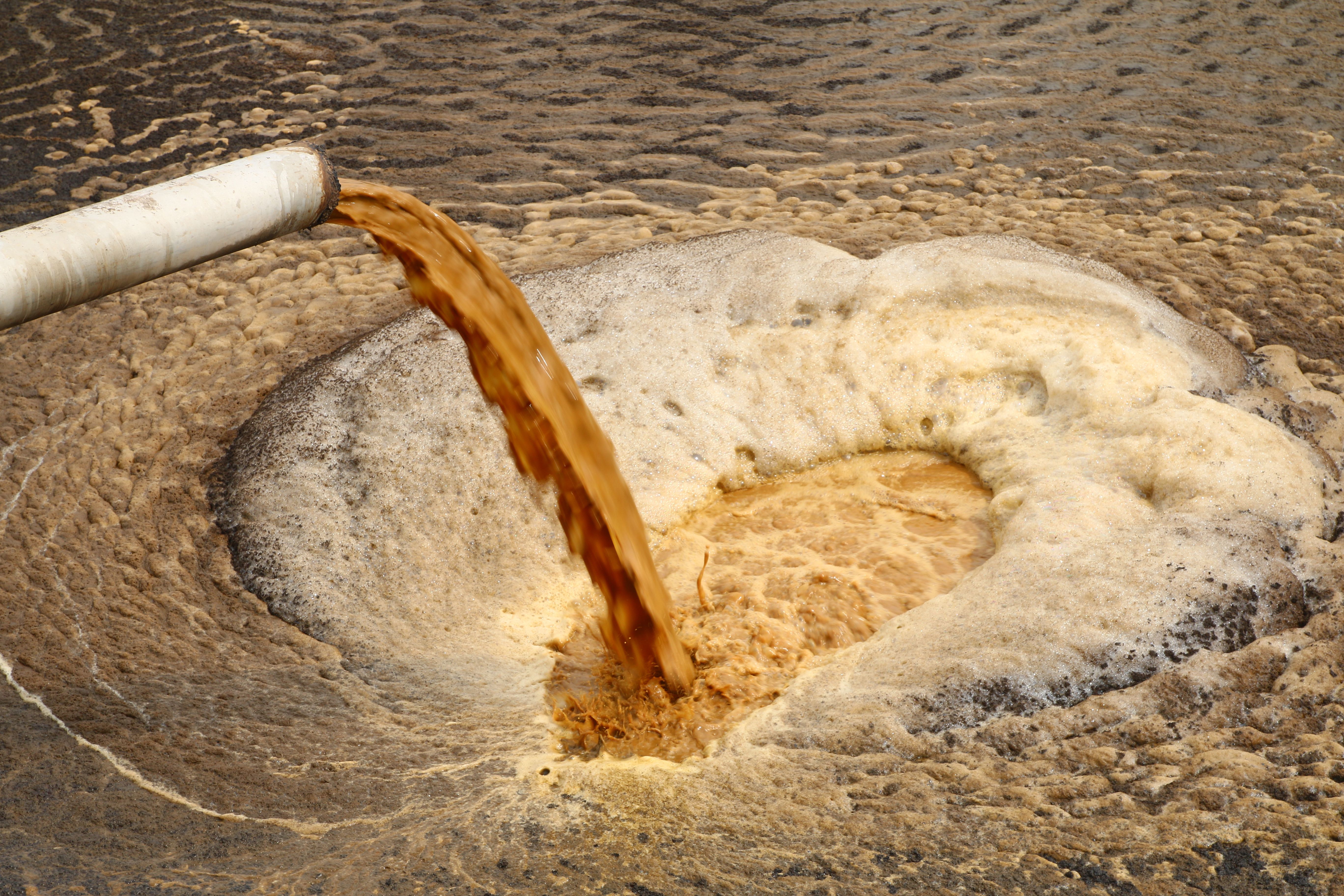Amphetamine-Type Stimulant Extraction System Tested on Wastewater and Urine
Scientists from Dalian Maritime University in Dalian, China, are testing a new amphetamine-type stimulant extraction system on wastewater and urine samples (1). The scientists used a combination of dummy molecularly imprinted polymers (DMIPs) and molecularly imprinted polymer mixed matrix membranes (MMMs), and their findings were recently published in the Journal of Chromatography A (1).
Palm Oil Mill Effluent (POME) wastewater being discharged | Image Credit: © t4nkyong - sto

Amphetamine-type stimulants (ATSs) are synthesized psychoactive substances such as amphetamine (AMP), methamphetamine (METH), and 3,4-methylenedioxymethamphetamine (MDMA). While gas or liquid chromatography–mass spectrometry are the techniques mostly used for quantifying ATSs, scientists still face challenges finding test methods that are rapid, efficient, involves minimal sample preparation, and can produce improved purification. Solid phase extraction (SPE) does have advantages over traditional sample preparation methods such as low solvent consumption and cost, and from there, multiple solvents, such as magnetic nanoparticles and polymer monolith, have been used to better separate complex substrates such as sewage and blood.
One SPE solvent that is becoming more popular are molecularly imprinted polymers (MIPs). In the study, highly cross-link polymers were prepared in the presence of template molecules, functional monomers, and cross-linker. After the template molecules were removed, imprinting sites matching several of their qualities are formed in the polymer matrix, allowing MIPs to specifically recognize the target. This allows for the dummy molecularly imprinted method using structural analogues as virtual templates to be used for building molecular recognition systems. The scientists also looked to a novel extraction method based on molecularly imprinted polymer mixed matrix membranes (MMMs). MMMs are formed by homogeneous MIPs particles dispersed in the polymer matrix phase, with different qualities such as high porosity, thermal reversibility, and good bonding ability being effective detection factors.
The scientists created their DMIPs-MMMs-based method to test its effectiveness in analyzing complex substrates, as well as various individual qualities. Synephrine (SYN) molecules were first selected as the dummy template of ATSs. The adsorption capacity and selectivity of DMIPs were also investigated. MMMs were then formed by combining the prepared DMIPs with an agarose polymer matrix. Extraction efficiencies of MMMs for ATSs were evaluated by studying the effects of membrane matrix, pH, elution reagents, shaking time, and dissolved organic content. Finally, the optimized DMIPs-MMMs method coupled with HPLC-MS/MS was validated and implemented to extract and detect five ATSs from wastewater and urine samples.
The polymers were irregularly large with a specific surface area of 330 m2 g−1. Adsorption experiments found that the imprinting factors for five ATSs (amphetamine, methamphetamine, 3,4-methylenedioxyamphetamine, 3,4-methylenedioxymethamphetamine, and 3,4-methylenedioxy-N-ethylamphetamine) were 2.3∼3.7. Furthermore, extraction conditions such as membrane matrix, sample pH, dissolved organic matter content, extraction time, and elution reagent were optimized. This enabled the developed MMMs-HPLC-MS/MS method, leading to exhibit low limits of detection (0.1∼3.0ng L−1), satisfactory recoveries (91.7∼100%), and good repeatability (RSD < 7%, n=3). It was then successfully applied to ATSs analysis in wastewater and urine samples. Recoveries of ATSs in spiked wastewater and urine were 82.0∼98.4% and 82.3∼95.7%, respectively.
Based on the study’s results, the developed MMMs-HPLC-MS/MS method could be developed further and used as a feasible strategy to extract and determine trace ATSs in wastewater and urine samples.
Reference
(1) Tan, D.; Liang, Y.; Guo, T.; Wang, Y.; Li, Y.; Sun, X.; Wang, D. Dummy molecularly imprinted polymers-agarose gel mixed matrix membrane for extraction of amphetamine-type stimulants in wastewater and urine. J. Chromatogr. A 2023, 1708, 464368. DOI: https://doi.org/10.1016/j.chroma.2023.464368
TD-GC–MS and IDMS Sample Prep for CRM to Quantify Decabromodiphenyl Ether in Polystyrene Matrix
April 26th 2024At issue in this study was the certified value of decabromodiphenyl ether (BDE 209) in a polystyrene matrix CRM relative to its regulated value in the EU Restriction of Hazardous Substances Directive.
Traditional Chinese Medicine’s Effects on Liver Cancer Measured Using New UHPLC–QTOF-MS System
April 22nd 2024Scientists from Anhui University of Chinese Medicine in Hefei, China recently investigated the mechanisms behind what makes huachansu tablets, a type of traditional Chinese medicine (TCM), effective against liver cancer.